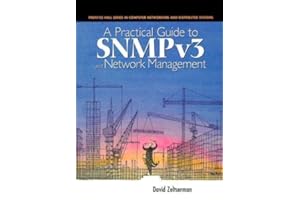Global score of the book idea "computer network"
Competition
A
Great idea. Few best sellers explicitly cover this theme.
Profitability
E
Expect very low earnings, even if you achieve best seller status in your target categories. If you are adamant about this theme consider releasing multiple books to increase your earnings.
Difficulty
A
You can easily make it to most best seller lists with less than 3 sales a day on average. This topic is ideal for new writers. Provided that the profitability and competition scores check out, you found your gem!
Niche
A
The sweet spot in terms of popularity and specifity. Great potential for revenue!
Your passion
C
After all, you've got to have passion and dedication about this idea to make it work.
Technical information related to books about "computer network"
Average book price
$9.99
Average stars per book
Average reviews per book
18
Average book length
141 pages
Average title length
17 words
Top 5 best selling authors
Grzegorz Nowak , Rick C. Worley , Chris Sanders , Steve Tudor , William R. Stanek
Top 5 best selling publishers
Marco Giua , Rick C. Worley , Applied Network Defense , Self Published , Microsoft Press; 2nd edition
Best sellers related to "computer network"
Sample of categories featuring these books
Click here for more categories directly connected to "computer network"
| Category name | Best seller rank | 50th book's rank | Median sales($) | Median price ($) | Volatility (%) | New releases (%) | Self pub.(%) | KDP Select (%) | Competition |
|---|
Related ideas and keywords

Do you want to be able to protect your valuable information and any other important data that is on your system and keep it away from a hacker who wants to use it maliciously?
Would you like to be able to protect your system and learn more about the different methods hackers can use to get onto your computer through your wireless network?
Wireless networks have changed the way that we are able to interact with our systems and with technology. In the past, we relied on a wired service that kept us in one place or jumping from one computer to the next. Today, most devices, including phones, tablets, and computers, are mobile and can be used anywhere, thanks to the wireless network that seems to be everywhere. While this is great news for most people, we have to be aware that there are some problems that can arise and any vulnerabilities that a hacker would like to take advantage of.
In this book, we are going to take a look at some of the ways that we can learn about wireless penetration and how a hacker is able to get onto your system and take advantage, often without you having any idea. Learning how this kind of penetration can happen and how we are able to avoid it as much as possible can make it so much easier for us to keep our information safe on our own system.
Some of the topics that we are going to take in order to handle our wireless network and to make sure that we are going to keep our information safe, includes:
An overview of wireless networking and some of the basics to help us get started
Steps to set up our methodology with wireless hacking and organizing all of the tools that we need
Methods to get ourselves past all of the different types of encryption online
Ways to exploit a wireless network
Steps to handle a wireless denial of service attack
The role of VPNs and firewalls in place to keep your network safe
The basics of cybersecurity and how you can use this to keep the hackers out
The different types of cyberattacks and malware operate
The consequences of a cyber-attack and why we need to prevent it before it ever starts
The basic steps you need to take in order to scan your own network and keep hackers out
While our wireless networks are helping to make things easier and allowing us to be more mobile with our work, they do bring up some big vulnerabilities that hackers love to try and get through. When you are ready to learn about wireless hacking and how to keep your own network safe and sound, make sure to check out this audiobook to help you get started.
Windows Command-Line Administrator's Pocket Consultant, 2nd Edition
William R. Stanek
2600: The Hacker Digest - Volume 1
2600 Magazine
On June 10, 2015, Kaspersky Lab issued a press release with an intriguing headline, which began with the words “Duqu is back”. The press-release acknowledged that Kaspersky Lab’s corporate network was attacked by new malware, loaded with three zero-day vulnerabilities. The detailed analyses of the malware by Kaspersky Lab revealed similarities between the newest malware and the infamous member of the Stuxnet family – Duqu.
The malware infected one of the computers in the Asian-Pacific regional office of Kaspersky Lab. Then it granted itself the rights of the domain administrator, including access to Microsoft Software Installer (MSI). Using the MSI, malware installed itself on other networked computers, slowly but surely making its way from Asia to the Kaspersky Lab’s headquarters in Moscow, Russia.
That discovery had big implications not only for the ways anti-virus software detects intrusions but also for Kaspersky Lab itself. Usually malware, after being detected, has no means of fighting back. It was not the case with Duqu. Two years after its exposure, the Duqu malware had its revenge.
In 2017, the USA, UK, and some other European countries issued a ban on the use of Kaspersky Lab computer security software on their government and military computers. Their decision was based on information presented to them by the originators of the Duqu malware, which had been quietly stealing data from inside of Kaspersky Lab’s corporate computer network.
In an unbelievable turn of events, detection of malware by one of the most recognizable names in information security industry led to a removal of Kaspersky Lab’s anti-virus software from computers that by association require the most protection because they keep top secrets and constantly targeted by adversaries.
To better understand how it could have happened, we need to explore the story about the Duqu malware, the only malware that had its revenge.
Read more
CompTIA Network+ N10-006 Cert Guide, Deluxe Edition
Keith Barker
Practical Guide to Snmpv3 and Network Management
David Zeltserman
Windows Vista Security For Dummies
Brian Koerner
Windows Vista in a Nutshell: A Desktop Quick Reference
Preston Gralla
You are limited to 3 queries per day.
Try unlimited access for $7.99
























